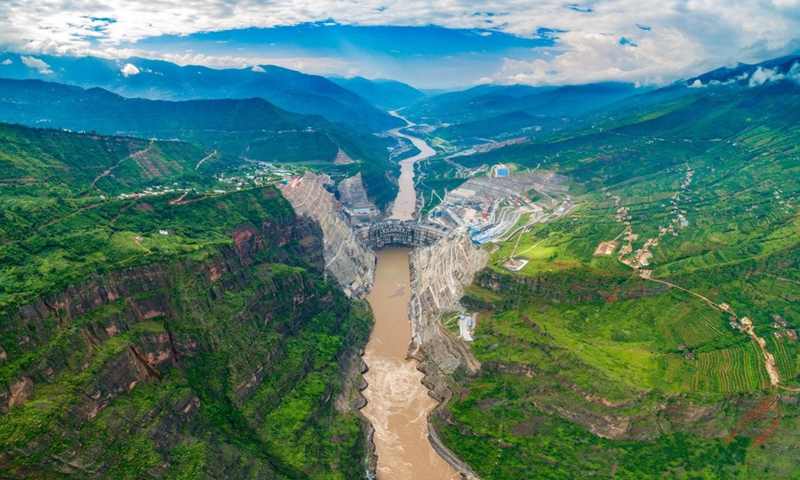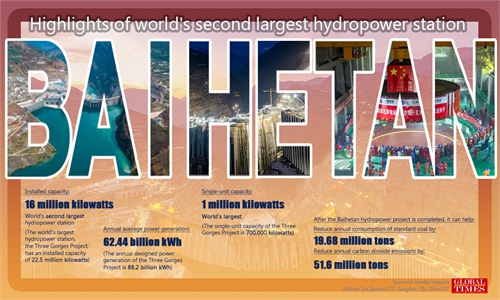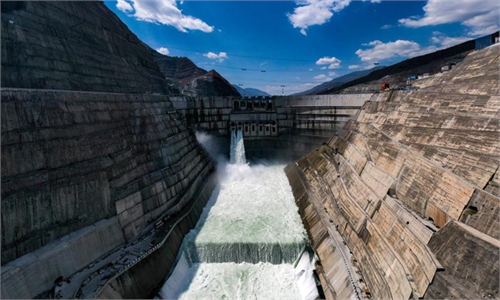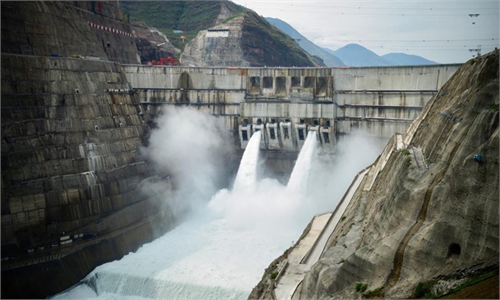How Baihetan Hydropower Station delivers a satisfying ecological answer to fragile upper Yangtze river zone

A view of Baihetan Hydropower Station. Photo: Xie Lei
As one of China's most important mega-projects, the Baihetan Hydropower Station's ecological and environmental issues have long concerned various sectors in society.
Located along Jinsha River, the most concentrated area of hydropower resources in the world, experts believed that the commissioning of the Baihetan Hydropower Station would contribute hugely to China's green development and carbon-neutrality goals.
But the Jinsha River basin is also a region with a fragile ecological environment. It is gratifying to note that, at the construction site of the Baihetan Dam, the usual scenes of large projects conducted in deep mountain valleys such as dusty, polluted air and poor environmental quality are absent. The strict control of environmental indicators during the construction process and the huge efforts invested in the protection of the ecological diversity make this world-class hydropower project live in harmony with picturesque green hills and clear waters.
"Previously, the unique geographical and climatic conditions of the dry and hot river valley combined with the fragile muddy sandstone and sparse vegetation causing construction dust control difficult and ineffective," Chen Yang, staff of technical department of the Baihetan project told the Global Times.
Chen noted that the China Three Gorges Corp (CTG), investor and main builder of the Baihetan Hydropower Station, has invested about 150 million yuan ($23.19 million) to purchase equipment fitted with dust collectors and launch targeted water sprinkling dust removal schedule, carrying out precise controls throughout the whole construction process.
According to the latest monitoring report of the second quarter of 2021, the environmental air monitoring indexes of Baihetan Dam during the construction period are all better than the second-level standard of the National Ambient Air Quality Standard.
Chen pointed out that most of the water used for dust removal came from recycled water used in construction material processing.
"The builders of Baihetan Hydropower Station insist on never discharging any quantity of sewage into the Jinsha River," He Wei, a deputy director of the Baihetan Hydropower Station Engineering and Construction Department, told the Global Times, saying that through independent innovation, their staffers have updated the waste treatment facilities to achieve 100% recovery and recycling of industrial wastewater, saving an average of 13 million tons of production water per year.
In terms of biodiversity protection, the CTG established a plant preservation area in the Baihetan Dam for comprehensive transplantation and protection of ancient tree species, and has been continuously carrying out vegetation restoration and ecological management in the water-level-fluctuation zone and construction area.
Faced with the problem of migratory breeding of rare and endemic fish species in the upper reaches of the Yangtze River, the CTG has coordinated measures for fish habitat protection and artificial breeding and release activities, deploying several integrated fish traps and collection devices to build a special channel for fish to swim across the dam, and constructed artificial fish nests to build "maternity units" for fish to increase the survival rate of fish eggs.
Wang Dianchang, director of environmental protection department of CTG, told the Global Times that the environmental assessment of Baihetan Hydropower Station has lasted for 20 years.
"The environmental impact of the station covers a lot of content and technical difficulties. Researchers have carried out more than 10 thematic studies, providing technical support for the environmental feasibility and environmental protection measures of the project. In the present and future, we will continue to give ecological priority to hydropower development and further achieve the goal of green development," he said.



